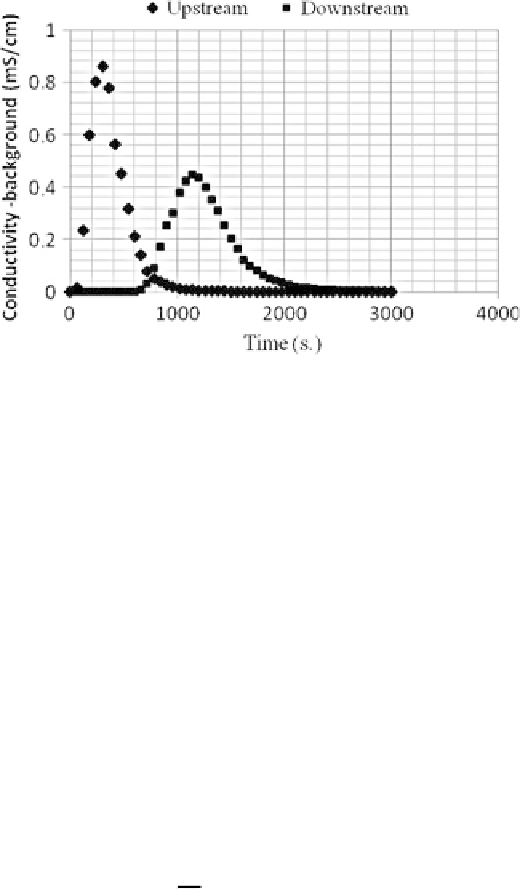Geoscience Reference
In-Depth Information
Fig. 1 Typical tracer result showing the spreading of the tracer cloud due to dispersion and
transient storage effects
our study site, and we visited the area twice, we do not have 32 experiments to analyse.
In our second visit, time and weather conditions prevented us from returning to some
of the streams. However, we do have several paired experiments (spring, summer)
to present here and a large pool of experimental data for combined analysis.
4 Obtaining Hydraulic Parameters Computationally
The transport of a conservative tracer in a stream with transient storage regions may
be described by the following mass conservation equations:
2
c
@
c
u
@
c
D
@
q
A
c
t
þ
x
¼
x
2
þ
k
1
ð
s
c
Þ
(1)
@
@
@
@
s
k
1
A
t
¼
A
s
ð
s
c
Þ
(2)
@
where
c
is the concentration of tracer in the main channel,
s
is the concentration of
tracer in the transient storage zone,
A
is the stream channel cross-sectional area,
A
s
is the transient storage cross-sectional area,
D
is the longitudinal dispersion coeffi-
cient,
k
1
is the solute exchange parameter between the main channel and the storage
zones,
q
is the lateral inflow,
x
is the longitudinal spatial co-ordinate and
t
is time.
For the experiments described herein, we are concerned with solving these
equations over some stream reach length,
L
, and over some time interval,
T
, during
which the tracer experiment takes place. Thus any parameters derived are recognised




